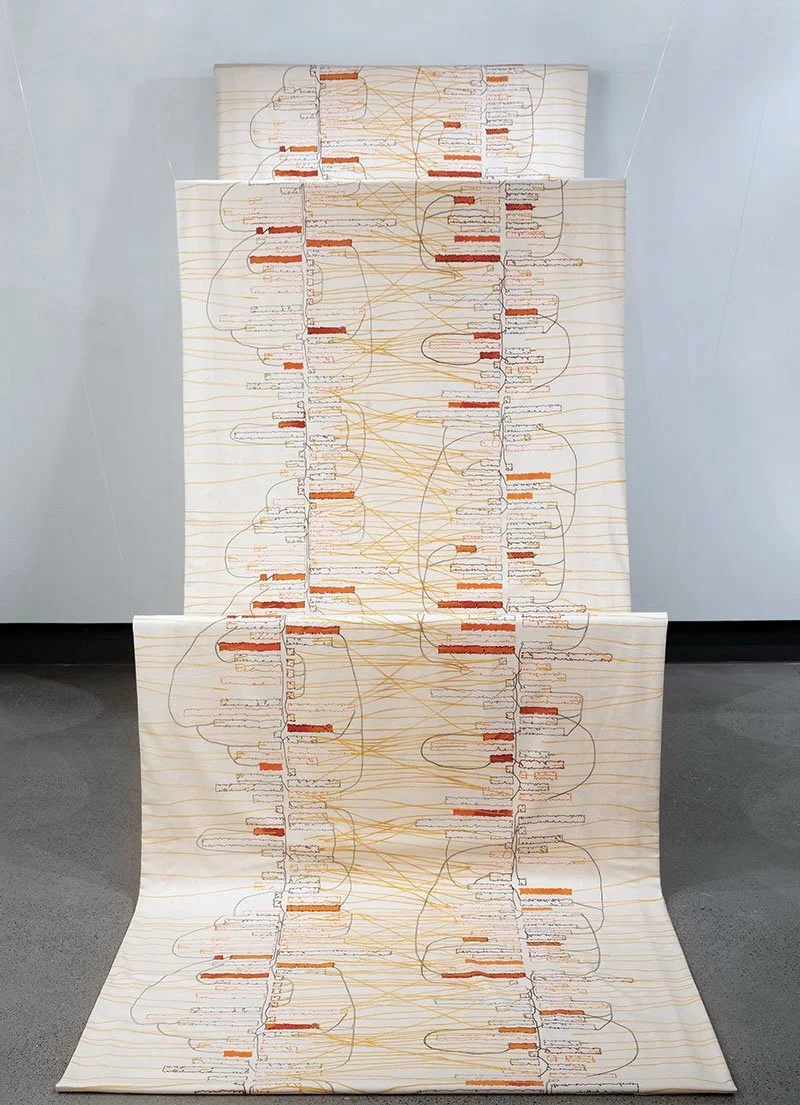
The architecture of language
From Massachusetts artist Sarah Hulsey’s show “Source Material,’’ at Bromfield Gallery, Boston, through July 2
She says:
“My work is concerned with the architecture that underpins language, which we use effortlessly but with little awareness of its beauty and complexity. Even a simple sentence has layers and layers of organization, governed by a complex set of rules and interactions happening below the level of our conscious knowledge. Small pieces of information (atomic components, as it were) combine into ever larger units within the concurrent linguistic systems at play. These components are organized into elegant structures that exist only in the mind. In my artwork, I analyze these structures and create visual correlates, looking for poetry and resonance in the rich patterns that emerge. ‘‘
I compose abstract frameworks by building up nested and connected forms set within reticulated grids. Networks of these grids serve as armatures on which small elements abut, merge, and grow into higher order objects. In these pages, the underlying structures of sentences are segmented, excerpted, and then recombined into forms reflecting their core, essential relationships.
Behind language
"Hydrogen 1,'' by Sarah Hulsey, in her show "Schemata,'' at Chandler Gallery, Cambridge, Mass., through March 11.
““Hydrogen 1,’’ by Sarah Hulsey, in her show “Schemata,’’ at Chandler Gallery, Cambridge, Mass., through March 11. ”
She says that printmaking, with its emphasis on "repetition, seriality and discrete marks built into larger forms, lets her "visualize the complex systems behind language.''
The gallery says "just as atoms are the building blocks of matter, Hulsey constructs names of chemical elements from their phonemes, the building blocks of speed.''


